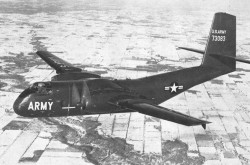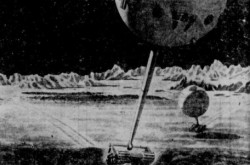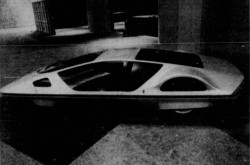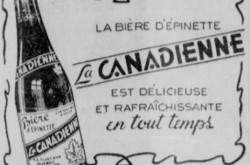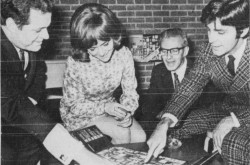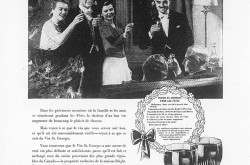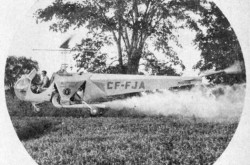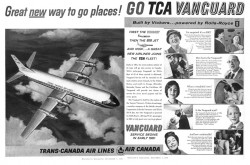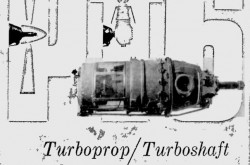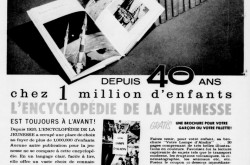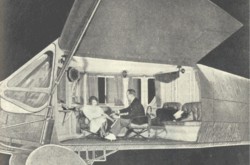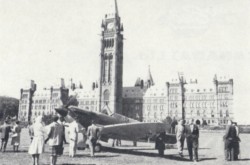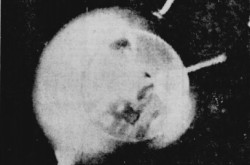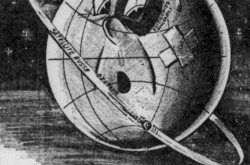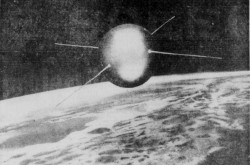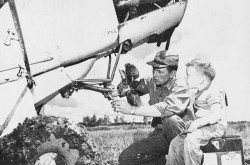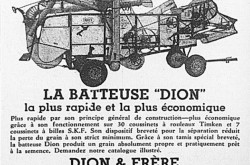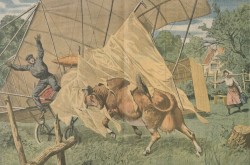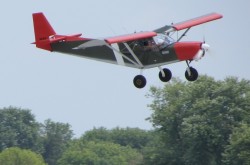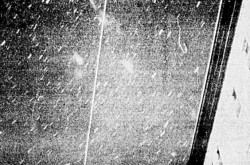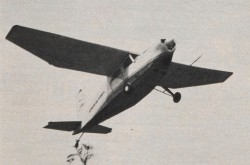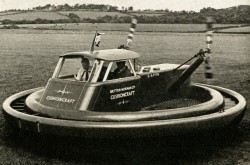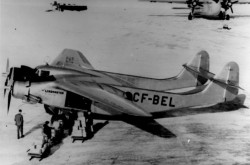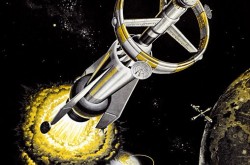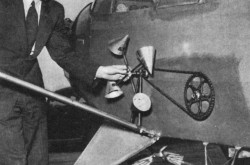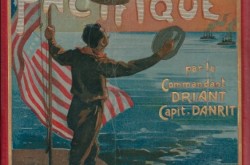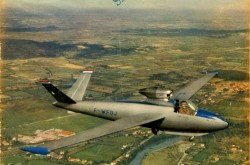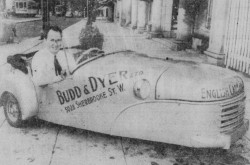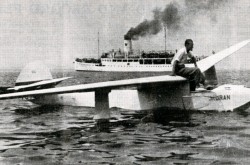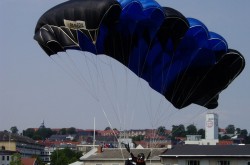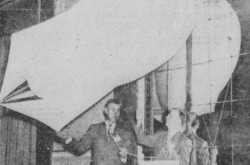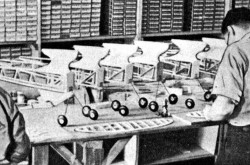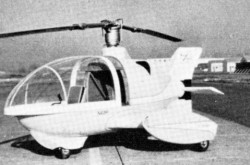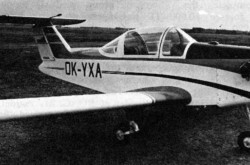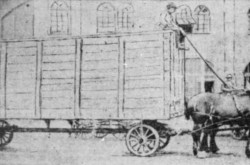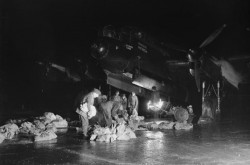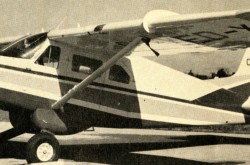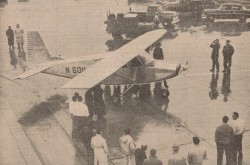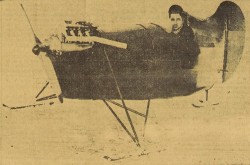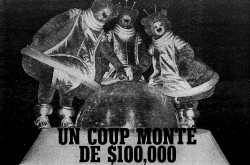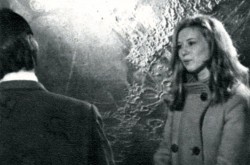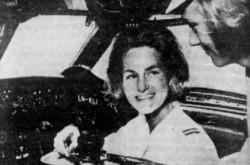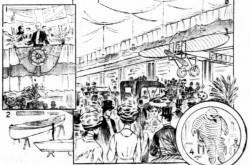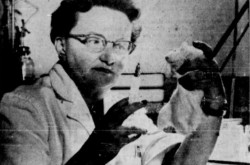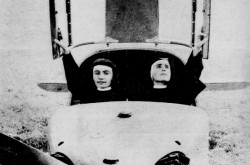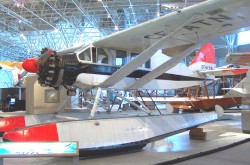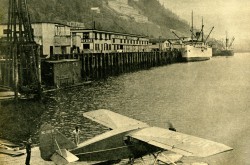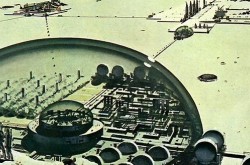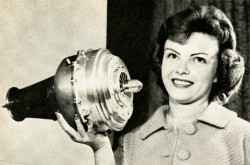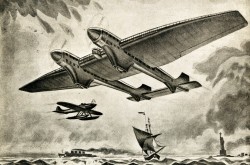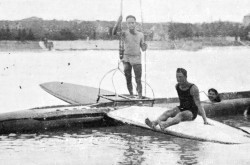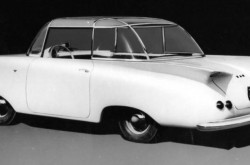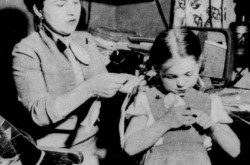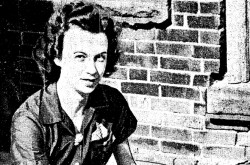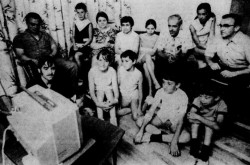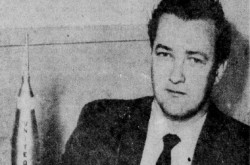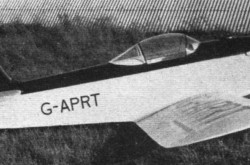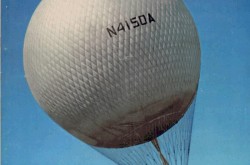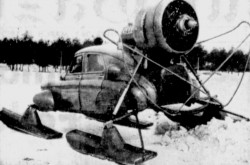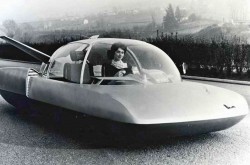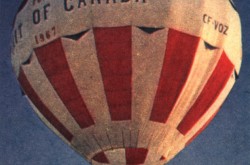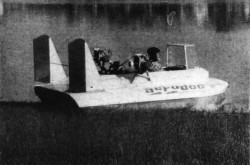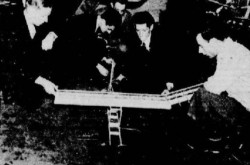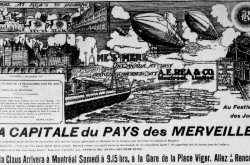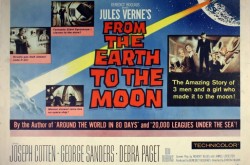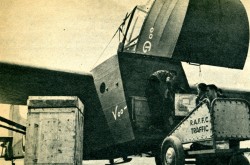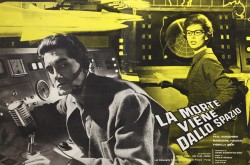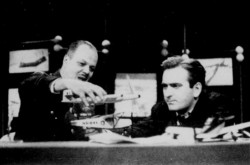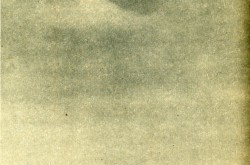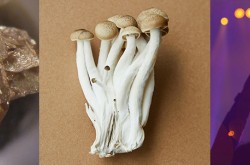“Luring Adam’s Progeny” in order to make it “Buy Empire Fruits from Home and Overseas” – The 1929 edition of the Imperial Fruit Show and the role played by the Dominion of Canada in that major British event, part 2

Hello, my reading friend. Allow me to welcome you to this 2nd part of our ever so tasty article on the 1929 edition of the Imperial Fruit Show, held in Birmingham, England, in late October and early November, and the role played by the Dominion of Canada and its products in that major British fruity event.
Shall we begin? Wunderbar!
You liked that advertisement, did you not, my reading friend? Yes, you did. Do not deny it. Your ears twitch when you fib. Here is another advertisement linked the 1929 edition of the Imperial Fruit Show…

An advertisement issued by John Forsyth Smith, the Canadian government’s Fruit Trade Commissioner, to advertise “the glorious apples of Canada […] unsurpassed for colour, sweetness and value!” Anon., “Canadian Government Fruit Trade Commissioner.” Birmingham Gazette, 25 October 1929, 3.
As the opening date of the Imperial Fruit Show grew nearer, arrangements for its official opening began to take their final shape. The individual whose assignment it was to do the honours would be Prince George, Duke of Kent, born George Edward Alexander Edmund of house Saxe Coburg and Gotha.
Would you believe that this member of the British royal family flew to Birmingham on the day of the opening? Well, he did.
Even though he was a recently minted private pilot, the good prince did not, however, pilot the two-seat Royal Air Force machine in question, a slightly modified (and unarmed?) Westland Wapiti general purpose (reconnaissance, observation, light bombing, etc.) aircraft if you must know. Well, at least not officially.
A second similarly equipped Wapiti carried the Comptroller of the Household of the prince, a courtier by the name of James Ulick Francis Canning Alexander.
Would you believe that those two machines were the first aircraft specifically used to transport members of the British royal family, and / or members of their entourage? And yes, this was 7 or so years before the creation of the King’s Flight, the first head of state air unit on planet Earth, in July 1936.
Before I forget, in 1929, the British royal family had of course changed its family name, a change made in July 1917, as the First World War raged, from an all too Germanic Saxe Coburg and Gotha to a more English Windsor, but back to our story.
The opening ceremonies of the 1929 edition of the Imperial Fruit Show went swimmingly.
Interestingly, the Minister of Agriculture, yes, the British one, was not among the very important people present at the opening of the show. Nay, he was not.
You see, Noel Edward Buxton was in London, England, on 25 October, at a cattle market, in order to accompany another member of the royal family, a more important one, the very popular heir of the throne, in other words the Prince of Wales, born Edward Albert Christian George Andrew Patrick David of house Saxe Coburg and Gotha, as the latter marked some British beef at the slaughterhouse of that market.
The marks in question were affixed as part of a national mark scheme which identified British food stuffs, a scheme implemented on at least some items no later than September 1928.
And yes, the Prince of Wales was indeed mentioned in August 2023 and August 2024 issues of our egalitarian blog / bulletin / thingee, but back to our story.

Prince George, Duke of Kent, 4th from the left, and some the dignitaries who welcomed him to the Imperial Fruit Show, Birmingham, England. From left to right, the Lord Mayor of Birmingham, Alderman Wilfred Byng Kenrick; the chairperson of the Imperial Fruit Show, Sir William George Lobjoit; the Lord Mayor’s spouse, Nora Kenrick, born Beale; Prince George; and an unidentified student of the Studley Horticultural and Agricultural College for Women of Studley, England, near Birmingham. Anon., “Prince George Comes to Birmingham by Aeroplane.” Birmingham Gazette, 26 October 1929, 12.
With Buxton out of the picture, the Parliamentary Secretary to the Ministry of Agriculture, an English physician by the name of Christopher Addison, was present as Prince George delivered his speech. The latter was suitably eloquent, even though he had probably not written said speech.
As was expected of him, the prince had a look at the Imperial Fruit Show. A sizeable entourage accompanied and / or followed him during that 30 or so minute visit.
As he passed a stand depicting a ship unloading a load of fruit, Prince George, an active Royal Navy officer until March 1929, I think, very seriously returned the equally serious salute of a young boy dressed as a civilian midshipman.
On a less serious note, a near biblical note dare I say (type?), the young prince, he was almost 27 in October 1929, accepted the apple offered to him by Mary Godwin, in other words Miss Canada, born Guinevere Eileen Goodman, on duty in the Palace of Beauty. A few photographers caught the scene but, given that they were not quite ready at that time, they were not sure their images would be very good. Informed of the situation, Prince George graciously agreed to take the pose with Godwin and the apple.
He also drank some (hard?) cider at some other location.
One other thing the prince got was a fruit basket offered to him by the chairperson of the Imperial Fruit Show, the local politician / justice of the peace Sir William George Lobjoit.
And yes, Prince George presumably saw the electric advertising machine which displayed 6 posters which showed varieties of Canadian apples and 6 posters which carried slogans illustrated by cartoonish illustrations.

Prince George’s interception by some male University of Birmingham students intent on securing his patronage for their Students’ Hospital Carnival. The grumpy cat look of the Birmingham City Police constable in the background is worth noting. “Prince George Comes to Birmingham by Aeroplane.” Birmingham Gazette, 26 October 1929, 12.
As he left Bingley Hall, the good prince was intercepted by some male University of Birmingham students intent on securing his patronage for their Students’ Hospital Carnival, an interception which greatly annoyed the constables of the Birmingham City Police. Even so, the young royal readily agreed to buy a 5 shilling badge but could only find 3 shillings in his pockets, sums which corresponded to $ 24 or so and $ 14.50 or so 2025 currency. The students promptly if politely took his moolah.
Humm, and me who thought that members of the British royal family did not carry money. Anyway…
Incidentally, the traditional procession which happened to be one of the highlights of the aforementioned carnival included an elaborate float provided by the organisers of the Imperial Fruit Show. Said float included a fruit basket presented by the Birmingham Wholesale Fruit and Potato Merchants’ Association, the largest ever seen in Birmingham it was said (typed?). Said basket would later be sold by ballot.
No less than 18 340 tickets were sold, by the way.
You will of course be pleased to learn that the individual who had the winning ticket donated the fruit basket to a local hospital, the Birmingham General Hospital.
Before taking his leave of the good people of Birmingham, Prince George altered his itinerary by making an unscheduled 40 or so minute visit of the factory of an English motor vehicle manufacturing firm, Wolseley Motors (1927) Limited. Some of the workers realised who he was only after the end of the visit.
Yours truly brought that detail to your attention in order to point out that a Wolseley Viper is mounted on the Royal Aircraft Factory S.E.5 fighter plane of the Canada Aviation and Space Museum, in Ottawa, Ontario.

Prince George seen here boarding a Westland Wapiti general purpose aircraft of the Royal Air force piloted by Squadron Leader David Sigismund Don, a few minutes before his departure from Castle Bromwich aerodrome, Birmingham, England. Anon., “Prince George Comes to Birmingham by Aeroplane.” Birmingham Gazette, 26 October 1929, 12.
Would you believe, my reading friend, that the aerodrome where Prince George had alighted and from which he took off, much later than expected, was Castle Bromwich aerodrome? Yes, yes, Castle Bromwich, the site of the huge factory where Supermarine Spitfire fighter aircraft and, to a far lesser extent, Avro Lancaster bomber aircraft were mass produced during the Second World War. And yes, there are 2 Spitfires and 1 Lancaster in the amaaazing collection of the Canada Aviation and Space Museum, but back to our story.
Among the tens of thousands of visitors who plied the floor of Bingley Hall were parties of employees from 300 or so firms, located in Birmingham or further afield, yours truly does not know, whose employers had arranged visits of the Imperial Fruit Show. And no, I cannot state with any degree of certainty if those people had to pay to get in. Somehow, I doubt it. I also hope that their employers paid their bus, coach, train or tramway fares.
Incidentally, the admission fee, tax included, for an adult was 1 shilling, a sum which corresponded to $ 4.80 or so in 2025 currency, a pretty reasonable sum of money given the admissions fees of Canada’s national museums these days. Sorry, sorry.
That admission fee, yes, the 1929 one, was cut in half for children, and for adults who visited the site between 5 and 10 PM.
An adult wishing to gain access to the Palace of Beauty had to fork out an additional 3 pennies, a sum which corresponded to $ 1.20 or so in 2025 currency.
By the looks of it, a group of 500 or so poor Birmingham children did not have to worry about that admission fee. They were the guests of Leslie H. Elbourne, the manager of Alhambra Theatre (Birmingham) Limited, a local movie house which belonged to a local firm, Cinema Proprietors Limited. The tickets had been distributed to children who attended the free meal centres run by the Birmingham Education Committee, and this via a daily newspaper, Evening Despatch of Birmingham.
The children went on a conducted tour of the Imperial Fruit Show. Their joy hit the proverbial roof when the staff of the Canadian section of the Empire Marketing Board display gave a small bag of apples to everyone. And yes, even though many children had planned to bring their bag home, more than a few of them could not resist the urge of eating at least one apple.
It should be noted that the aforementioned Godwin paid a visit to a number of young patients of the Birmingham and Midland Free Hospital for Sick Children, in Birmingham. She gave apples to as many of them as she could.
Although not as boisterous as the 500 or so young humans who visited the Imperial Fruit Show, the 400 or so British and Commonwealth / Empire fruit growers who attended the luncheon held on Growers’ Day, 30 October, were a reasonably happy lot. Mind you, some of the growers who had hoped to win a prize but had not might have been a tad grumpy.
In any event, Growers’ Day was a good day. The luncheon was preceded by the showing of documentary films which depicted the growing, grading and marketing of fruits and vegetables from all over the Commonwealth / Empire. It was followed by a conference. The Acting Agent General for Nova Scotia, Jean Iris Howard, might have been one of the talking heads.
In any event, again, she was present at the conference, as were the Agents General for British Columbia, Ontario and Québec, the merchant Frederick Arthur Pauline, the businessman / broker William Courtlandt Noxon and the physician / professor Louis Joseph Lemieux.
Would you believe that Howard was the very first woman to hold the lofty post of Agent General in the history of the Commonwealth / Empire? If yours truly may take the liberty of quoting the title of a 1985 song (!) by the British duo Eurythmics, would I lie to you?
Incidentally, in the cases which concerned us, an agent general was an individual appointed by a Canadian province to represent its commercial, diplomatic and legal interests in the United Kingdom or elsewhere.
Sadly enough, Howard did not permanently replace her late father, John Howard, as Agent General for Nova Scotia. You see, the government of that province abolished that position at the end of June 1931, and this presumably as a cost cutting measure engendered by the Great Depression which was then walloping the world.
Did you know that Nova Scotia had been the first British colony to appoint an Agent General in London, and this in April 1762? Joshua Mauger was a prominent and respected merchant / shipowner / smuggler, a slave trader also, which could not be more revolting.
Incidentally, again, Howard’s father had held the position of Agent General for Nova Scotia for 37 or so years, between 1891 or 1892 and 1929, but I digress.
With more 90 000 visitors going through its gates, the 1929 edition of the Imperial Fruit Show was a huge success. Would you believe that this attendance figure was almost twice as large as that of any other previous edition of that same show?
That surprisingly large attendance actually exhausted the supply of fruits scheduled to be distributed free of charge to visitors. Additional quantities of fruits had to be acquired in a hurry, including not far from 400 boxes of (Canadian?) apples.
The supply of fruits entered into competitions which was to be sold to the public, after the end of the show, by members of the Birmingham Retail Fruiterers’ Association, also ran out. Additional quantities of fruits had to be acquired in a hurry.
Indeed, the Canadian apple recipe book, distributed free of charge, proved so popular that the last one disappeared during Day 3 of the 9 day show.
All in all, the 1929 edition of the Imperial Fruit Show was a… fruitful one for Canada’s fruit growers. Apple growers from Nova Scotia and British Columbia came home with 8 first prizes and 3 second prizes on the one hand, as well as 5 first prizes and 1 second prize on the other. In addition, K.W. Borden of Wolfville, Nova Scotia, won a first prize for dessert pears.
A brief digression if I may. The largest pear on display at the Imperial Fruit Show was a prize winning behemoth hailing from England. It tilted the scale at a whopping 750 or so grammes (26.5 or so ounces). Wah!

Charles A. Bentley of Berwick, Nova Scotia, the most successful Canadian fruit grower at the 1929 edition of the Imperial Fruit Show, held in Birmingham, England, as seen in an advertisement issued by the Chilean Nitrate of Soda Educational Bureau of Toronto, Ontario. Anon., “Chilean Nitrate of Soda Educational Bureau.” The Journal of Agriculture and Horticulture, 1 March 1930, IV.
Incidentally, Charles A. Bentley of Berwick, Nova Scotia, won no less than 5 of the 8 first prizes won by Nova Scotia apple growers. Wah!
On the other hand, Associated Growers of British Columbia Limited of Vernon, British Columbia, won 3 of the 5 first prizes and the single second prize won by, err, British Columbia apple growers. One of those first prizes was in the Commonwealth / Empire dessert apple section. This was the 4th time that OK McIntosh Red apples displayed by Associated Growers of British Columbia had won that prize.
A brief digression if I may. The Chilean Nitrate of Soda Educational Bureau mentioned in the caption of the photograph we just saw was a propaganda arm of the Chilean Nitrate Producers’ Association of London, an association described at the time by more than a few people as a price-fixing trust of the most extreme type, a fertilising trust more or less controlled by British firms. End of digression.
The successes of Nova Scotia’s fruit growers did not go unnoticed. To quote an editorial published in a late October issue of a daily newspaper, The Evening Mail of Halifax, Nova Scotia,
To the Nova Scotian, there is no apple grown that excels the product of the Annapolis and Cornwallis Valley orchards and hillsides, but, lest we be considered prejudiced, it is gratifying to receive this distinctive stamp of approval in an Imperial competition.
The editorialist had more than those happy thoughts on his mind, however…
It is not enough, however, for our orchardists to produce fruits of a high standard. They must see to it that the reputation thus earned be not marred by careless packing and inferior grading. There have been complaints of this nature, but surely the pride and enterprise of our people will see to it that the excellent publicity given our fruit through these awards be not weakened by packing which, to say the least, has been open to criticism.
Ow…
Comments made in mid-November 1929 by a member of His Majesty’s Loyal Opposition in the House of Commons of Canada put a tad of a damper on all the happy thoughts. You see, Ira Delbert Cotnam, a physician, stated after returning from a trip to England that “Canadian products were practically unknown in the United Kingdom” and that “Canada was not securing the publicity accorded to other Dominions.”
Canadian trade officials stationed in London were astonished at those statements. They might also have been a tad dismayed.
A comment made by Cotnam to the effect that Canadian apples were nowhere to be seen in England seemingly irked them just a tad. You see, the 1929 crop of apples had yet to reach England when Cotnam was overseas.
Besides, according to Canadian trade officials stationed in England, Canadian products had been on display in 25 or so exhibitions and 125 or so agricultural shows held in 1929 in various British municipalities. One of those events was of course the Imperial Fruit Show.
Dare yours truly suggest that Cotnam was talking (typing?) about something he did not know or knew badly, without great discernment and with obvious approximations? In other words, that he was yacking through his hat, like too many 2025 rubbish-spouting politicians hailing from a certain political family present all over our big blue marble? A tad too controversial, you say (type?), my reading friend? Humm, you might be right. I shall not make that suggestion.
In any event, Cotnam’s statements made the news for only a few days. The Canadian trade officials stationed in London would not soon forget them, however, but back to our story.
A digression, err, diversion if I may. One of the exhibitions held in England in the fall of 1929 in which Canada was present was the 51st edition of the Brewing and Allied Trades Exhibition, held at the Royal Agricultural Hall, in London, between 2 and 9 November.
There were 700 or so entries in the bottled and draft classes. Wah!

Some of the judges at the 1929 edition of the Brewing and Allied Trades Exhibition held at the Royal Agricultural Hall, in London, England, hard at work. It was a thankless job, but someone had to do it. Lucky sods. Anon., “Business or Pleasure?” Derby Daily Telegraph, 2 November 1929, 7.
And yes, there were also some fine ciders, not to mention fine wines from France and the Commonwealth / Empire. Lah-di-dah. Sorry, sorry.
Ironically, the most impressive item on display at that exhibition, and this for the first time, was a multi-tonne (multi-ton) beer bottling machine, capable of churning out 120 or so quart or pint bottles a minute. A multi-tonne (multi-ton) beer bottling machine hailing from the United States.
And yes, the 18th amendment to the Constitution of the United States, yes, the one which established the prohibition of alcohol in that country, was very much in force in November 1929, something that British journalists mischievously pointed out to the representative of the manufacturer of that behemoth of a machine. Said representative answered them with a smile, stating that the machine could just as easily churn out bottles of non-alcoholic beer and soft drinks – and was doing so, in several locations in the United States, but I digress. Again. But back to our story.
More good news reached the shores of Canada in late November 1929. The 500 000 or votes cast in the Palace of Beauty competition had been tallied. The British exhibit did very well with almost 84 000 votes. Another exhibit proved more popular, however. It got more than 90 000 votes. That exhibit was the Canadian one.
The exhibit which came in 3rd place was that of W. & T. Avery Limited, an English manufacturer of weighing machines based in… Birmingham. An interesting choice, would you not say (type?), my reading friend?
And no, I too cannot figure out how the number of votes cast greatly exceeded the number of people who visited the Imperial Fruit Show. Was it possible to visit the Palace of Beauty without having to go through the gates of the show, you ask, my perplexed reading friend? I do not know. Sorry.
And yet more good news reached the shores of Canada, this time in early January 1930.
While it was true that R. John Slayter of Gaspereau, Nova Scotia, knew that he had won one of the first prizes won by a fruit grower hailing from that province, he had no idea of what his score had been, however. He got that score in, err, early January. His Golden Russet apples had seemingly achieved the highest score ever achieved by apples at an Imperial Fruit Show. A perfect score. 100 points.
And this as good a way as any to end this article. Tata for now.
Err, what is it, my reading friend? You wish to know what happened to the aforementioned Godwin? Seriously? You do realise that this will shoot down in flames the happy ending of this article, do you not? To quote a customary saying on the continent of Essos, heard (read?) in the world of the American epic fantasy novel series A Song of Ice and Fire, known to anglophone television viewers as Game of Thrones, valar morghūlis, all men must die.
In addition, this text could turn out to be much longer than expected.
All right, all right. Do not draw your sword. The superannuated teenager than I am is rather attached to his follically challenged noggin.
Godwin crossed the path of an English actor named William Earle Grey no later than 1932, when the two of them contributed to the presentation of a play at the recently opened Charta Theatre in London. The couple tied the knot in September 1935.
In 1939, Godwin and Grey joined a theatre company formed by the English actor / playwright Maurice Colbourne and the English actor Barry Cuthbert Jones for the purpose of touring Canada from coast to coast over a period of 5 or so months, a venture sponsored by the British Council, an organisation founded in 1934 on the initiative of the Foreign Office, the British foreign affairs department, and this in order to support English education abroad, promote British culture and fight the rise of fascism.
Announced in early August 1939, the pan Canadian tour of that theatre company was scheduled to open in Montréal, Québec, in early October. Yes, in early October 1939, five or so weeks after the onset of the Second World War.
Hummm, I am providing you with far too much information, am I not, my reading friend? If I keep this up, we could end up with another 4 part article.
To make a long story short, the reception given to the British theatre company’s tour was lukewarm. Indeed, said company broke up no later than March 1940. The great majority of its members soon returned to England. Godwin and Grey stayed behind, and…
Hummm, I am still providing you with far too much information, am I not? All right, let us be brutally brief.
Godwin and Grey settled in Toronto, Ontario, where they joined that city’s small theatre community. By the end of the Second World War, in 1945, the couple had begun to notice a burgeoning appreciation for the plays of some English bloke named William Shakespeare. As a result, they created the Earle Grey Players in the Spring of 1946.
The presentation of several plays proved quite successful, so successful in fact that it led to Canada’s very first Shakespeare festival, the first to be held in the Commonwealth, outside the United Kingdom, actually, held in the open air, in the quadrangle of the University of Toronto’s Trinity College, in… Toronto, between late June and mid July 1949.
Would you believe that Torontonians were able to listen to Tudor music played on ancient viols and harpsichords on two occasions during that time period?

Mary Godwin as Queen Gertrude, Queen of Denmark and mother of Prince Hamlet, in William Shakespeare’s Hamlet, Toronto, Ontario. Anon., “Top Singing and Dramatic Stars Give Promise of Fine Entertainment for Next Week.” Toronto Daily Star, 28 July 1956, 10.
Over the years, the imprint on the Canadian scene of Toronto’s Shakespeare Festival grew. Besides said yearly festival, a touring company, an Elizabethan music festival, a foundation and a drama school made their appearance.
What did not change was Godwin and Grey’s wish to stage Shakespeare’s plays in a setting as close to 16th Century England as possible. That, and the absence of government funding. Well, until 1957 that is, when the Metropolitan Council of Toronto, the Department of Education of Ontario and the Canada Council for the Arts provided some grant money.
The high reputation of the Shakespeare Festival was recognised in 1951 when the trustees of Shakespeare’s birthplace in Stratford-on-Avon, England, donated a cutting from the mulberry tree which grew in the playwright’s garden to Grey and Godwin. The British High Commissioner, Sir Peter Alexander Clutterbuck, and his spouse, Lady Dorita Charlotte Eileen Clutterbuck, born Weldon, ceremoniously planted that cutting in late June, in the quadrangle of Trinity College.
The 10th edition of Canada’s first Shakespeare Festival was held in July 1958.

William Earle Grey and Mary Godwin in front of a model of a stage set, Toronto, Ontario. Monroe Johnston, “Ten-Year-Old Festival – ‘What a Grand Place to do Shakespeare’.” Star Weekly Magazine, 5 July 1958, 12.
Things were about to change, however. One of the Shakespeare Festival’s staunch supporters, the Indian English Canadian provost of Trinity College, Reginald Sidney Kingsley Seeley died in August 1957. The University of Toronto had also grown annoyed at the loss of rentals to summer students caused by the somewhat noisy activities of the festival.
Things came to a head in 1959 when renovations at Trinity College meant that a new venue would have to be found in order to hold an 11th edition of the festival. When no such venue could be obtained, Godwin and Grey returned to England, in 1960 perhaps. Both of them continued to act, or direct in the case of Grey.
As Canada’s first Shakespeare Festival exited stage left, so did Godwin’s dream of turning the quadrangle of Trinity College into a living reproduction of the Elizabethan age, complete with bona fide antiquities and treasures.
One had to wonder if the, by then, bigger and better-known Stratford Shakespearean Festival, today’s Stratford Shakespeare Festival, held annually in… Stratford, Ontario, since 1953, had not sucked much of the air out of the room.
Mind you, neither Grey nor Godwin had a star power comparable to that of English actors like Alec Guinness de Cuffe or James Neville Mason, or of a young and handsome Canadian actor by the name of Arthur Christopher Orme Plummer, a gentleman mentioned in June 2019, April 2021 and October 2022 issues of our theatrical blog / bulletin / thingee.
Mind you, a Canadian actor by the name of Lorne Hyman Greene, born Lyon Himan Green, and a younger Québec / Canadian actor by the name of William Shatner also did well at the Stratford Shakespearean Festival in the 1950s. (Hello, EP, EG and SB!)
And yes, you are correct, my reading friend, Greene was mentioned in our astonishing blog / bulletin / thingee several times since September 2018.
A thought if I may. Was it possible that the success of Toronto’s Shakespeare Festival had encouraged at least in part the dream of a Stratford journalist, Harry Thomas “Tom” Patterson, to launch a Shakespeare festival in his native city, and this in order to reverse its industrial decline?
Mind you, again, the fact that the people behind the Stratford Shakespearean Festival rooted that event in the 20th century might have struck a chord with a 20th century audience, something that the traditional, if not slightly antiquated and melodramatic acting style of Godwin and Grey, who were 66 and 53 years old in 1958, might not have achieved quite so well, but I digress.
The fact that Godwin seemingly liked to play characters usually personified by much younger actresses might not have helped either.
Grey was not forgotten in Canada, however. Nay. When the Toronto-based Association of Canadian Television and Radio Artists launched its annual awards ceremony, in 1972, one of those awards was, you guessed it, the Earle Grey Award, which recognised the most outstanding movie, radio or television acting performance. The first winner of that award was the Québec / Canadian actress Geneviève Bujold.
Incidentally, Grey was the (first?) president of the Toronto chapter of the Association of Canadian Radio Artists, the name the Association of Canadian Television and Radio Artists had when it was founded in 1943. He held that post for several years.
Would you believe that the Earle Grey Award still existed as of 2025? Well, it did. Now a lifetime achievement award, it is one of the Canadian Screen Awards given by the Academy of Canadian Cinema & Television of Toronto.
A brief digression if I may. Did you know that Bujold was to be one of the main characters of an American science fiction television series? Well, she was. She had been chosen to be the captain of the starship USS Voyager. I kid you not. (Hello, EP, EG and SB!)
Bujold was to play the role of Elizabeth Janeway, a name she did not like too much and which was changed to Nicole Janeway. In any event, Bujold walked away in September 1994, after only a few days of filming, citing the pressure of working on a weekly television series. There might also have been (irreconcilable?) differences of opinion between her and the producers of the series. End of digression. Yes, the last one. For today.
Guinevere Grey, as Godwin was also known, left this Earth in mid-March 1971, in London. She was 66 years old.
Grey, on the other hand, passed away in November 1978, in London, at the age of 86.
This writer wishes to thank the people who provided information. Any mistake contained in this article is my fault, not theirs.
The excessive length of the second part of this article, on the other hand, was your fault, not mine, except for the part about Star Trek: Voyager. And the Brewing and Allied Trades Exhibition. My bad.




































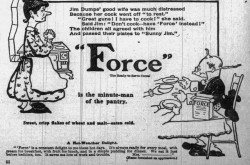
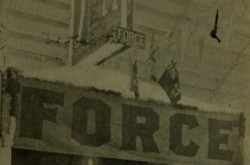
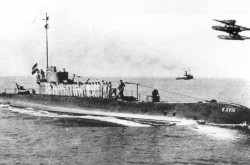
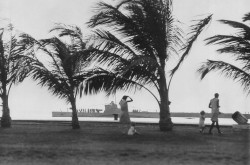
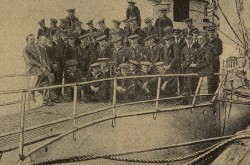
![A block of photographs showing some of the people involved in the bombing of beluga whales in the estuary and gulf of the St. Lawrence River. Anon., “La chasse aux marsouins [sic]. » Le Devoir, 15 August 1929, 6.](/sites/default/files/styles/thumbnail_7/public/2024-09/Le%20Devoir%2015%20aout%201929%20page%206.jpg?h=584f1d27&itok=TppdLItg)
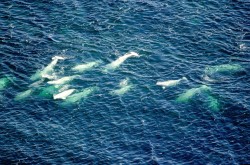
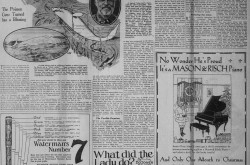

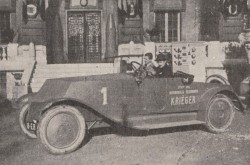
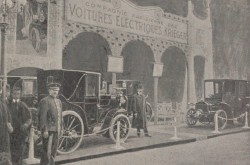
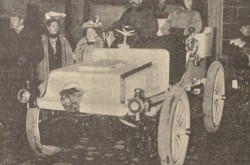
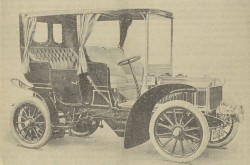
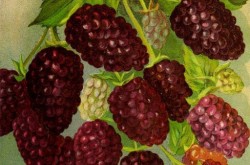
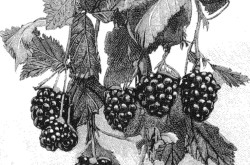
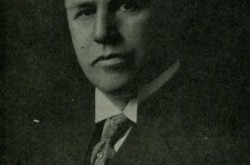
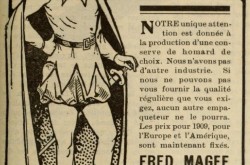
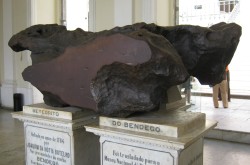
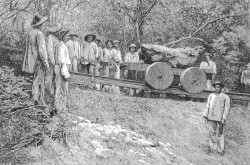
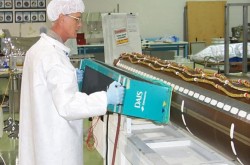

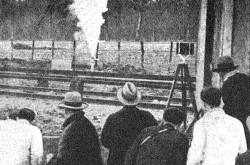
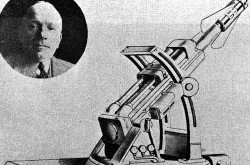
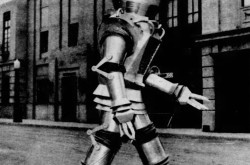

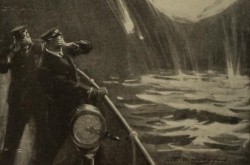
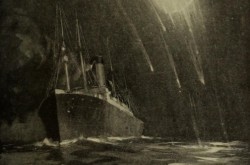
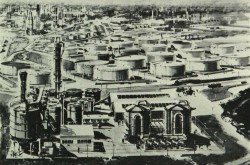

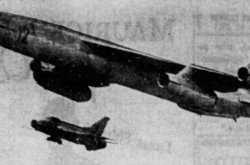

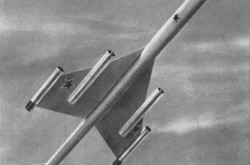
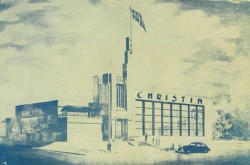
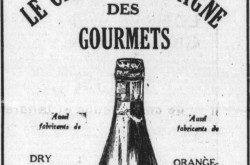
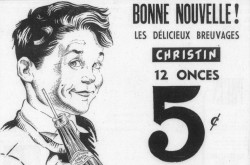
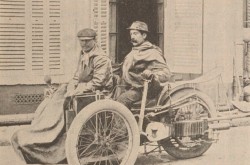
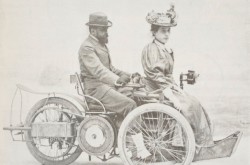
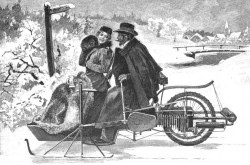
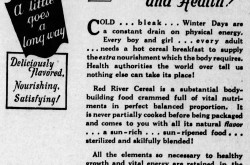

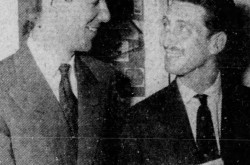
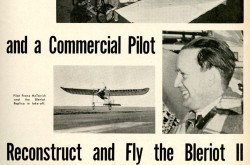
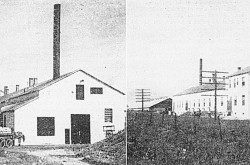
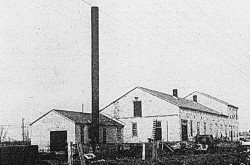



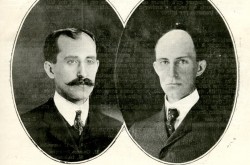

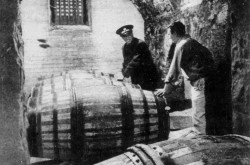
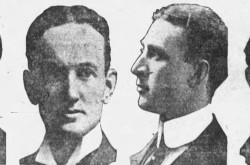
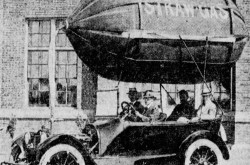
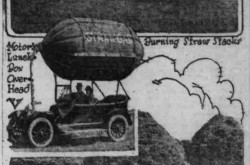
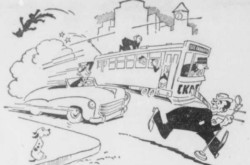

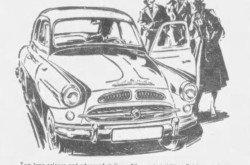
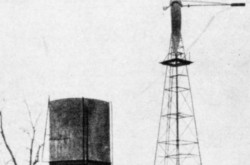
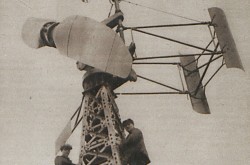
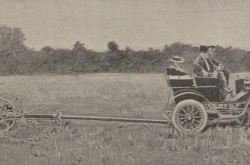

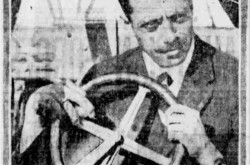
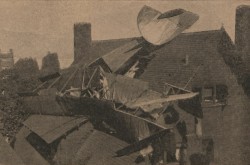
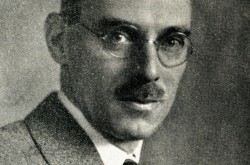
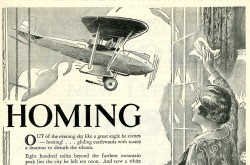

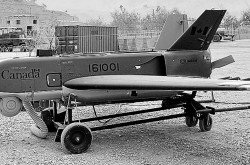

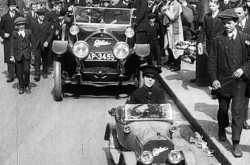
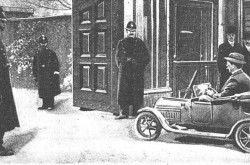
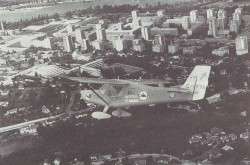
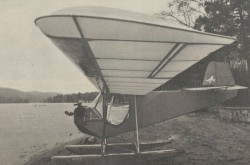

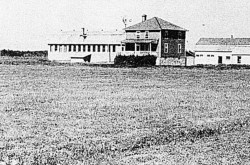
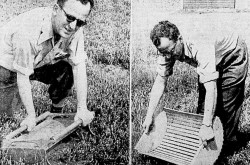
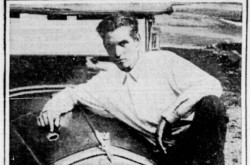
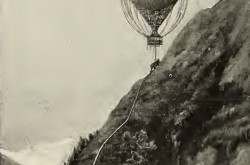
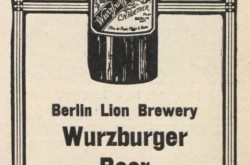

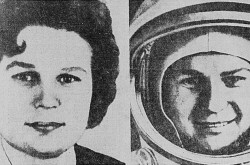
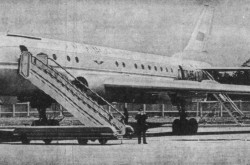
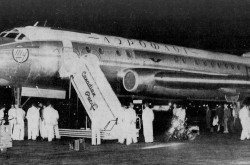
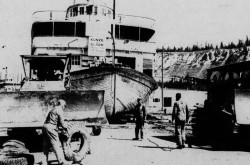
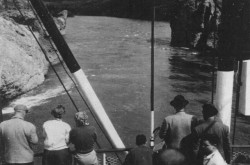
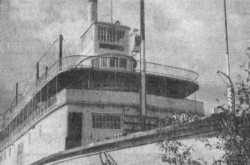
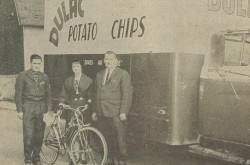
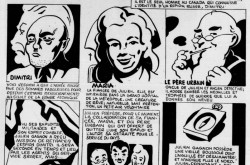
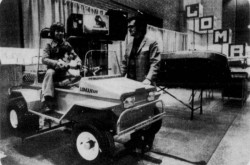
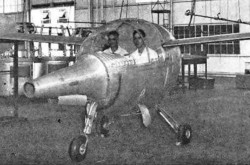
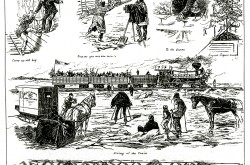
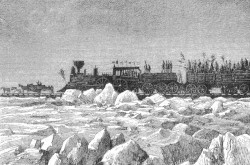
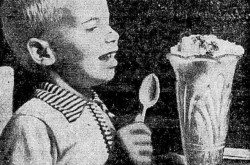
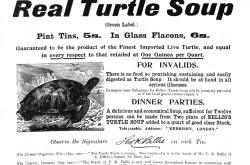
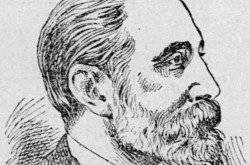
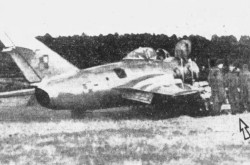
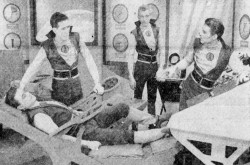
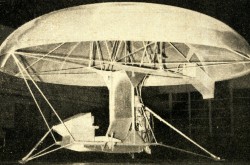
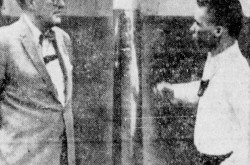
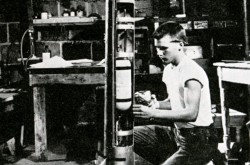

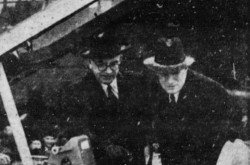
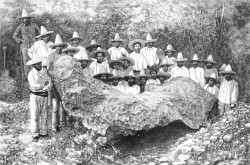
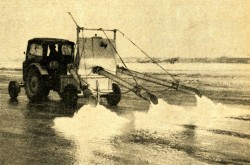
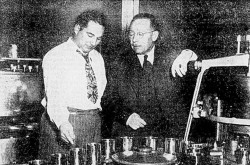
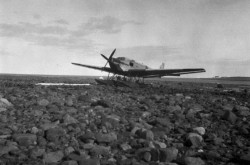
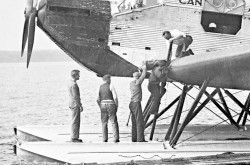
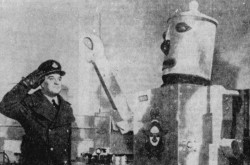
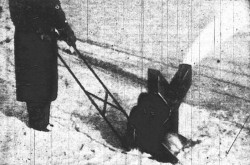
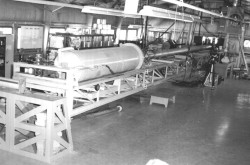

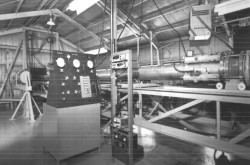
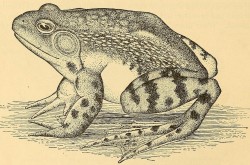
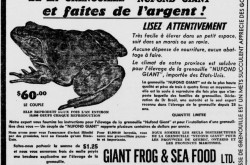
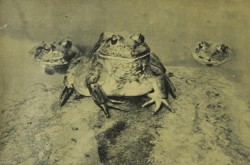
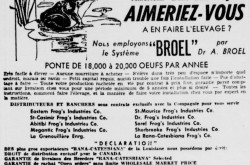
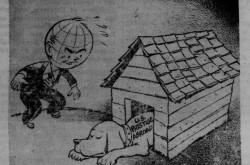
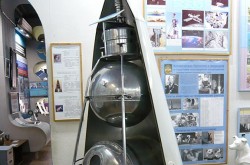
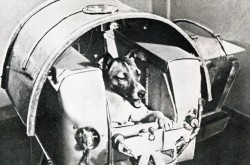
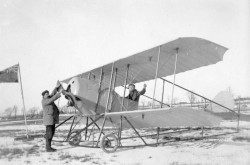
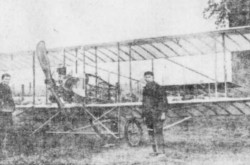
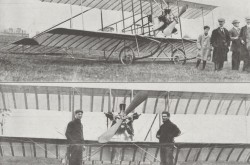
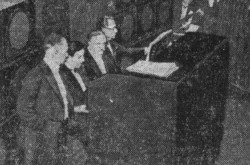
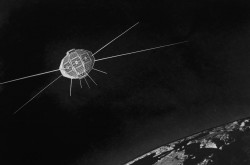
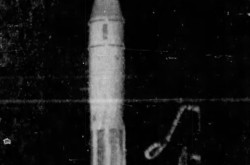
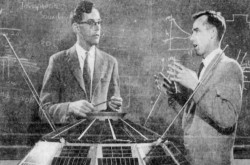
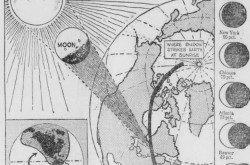



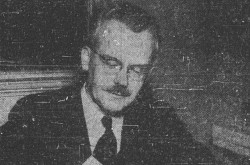
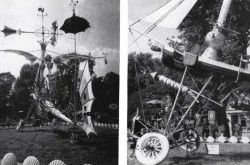
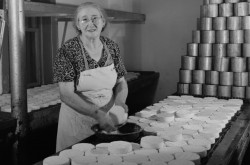
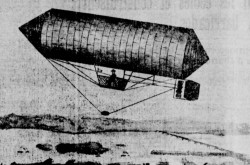
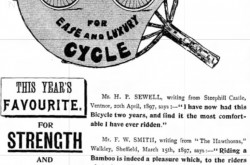
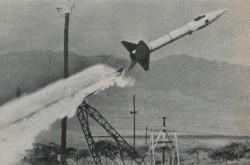
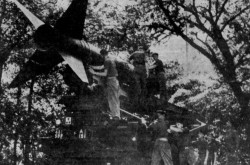
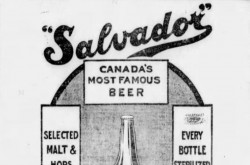

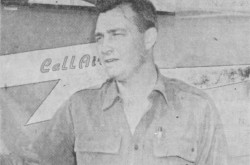
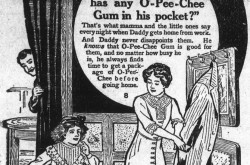
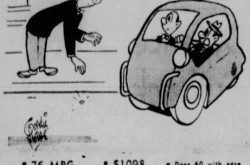
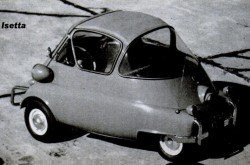
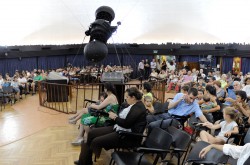
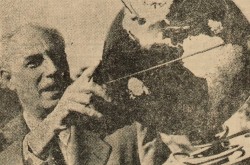
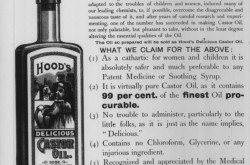
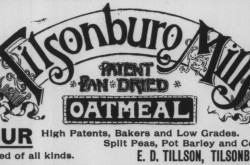
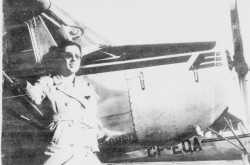
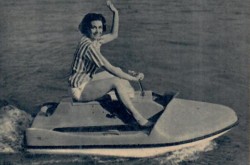


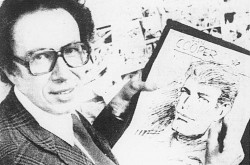
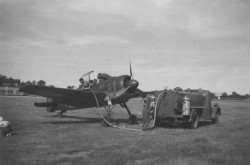

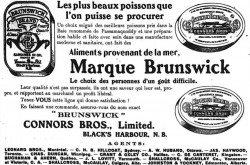


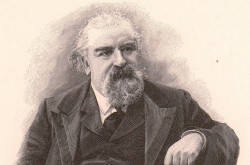
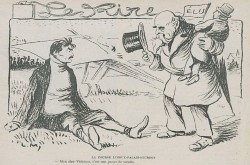
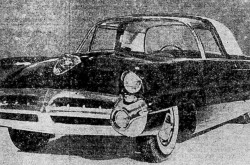
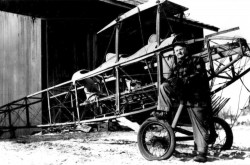
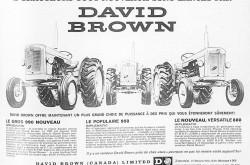
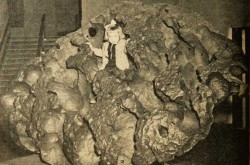
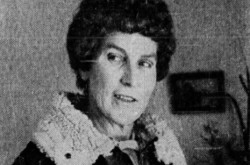
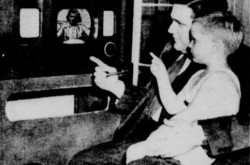
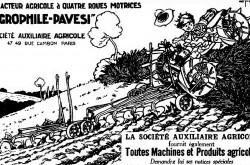
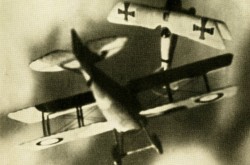
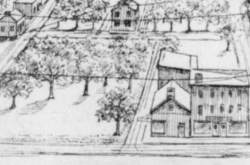
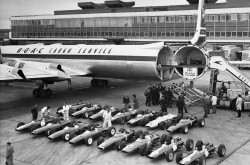
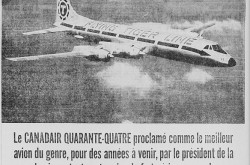
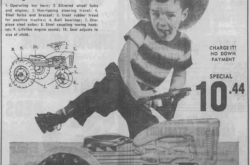

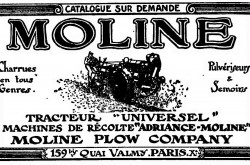
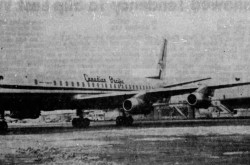
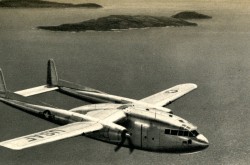
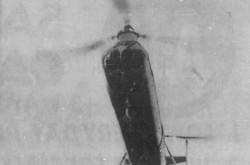

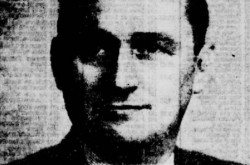
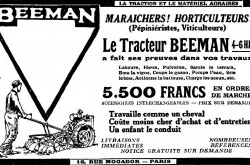
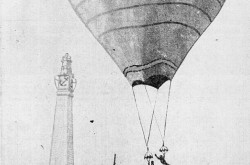

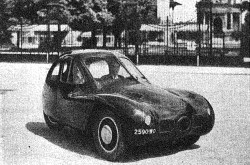
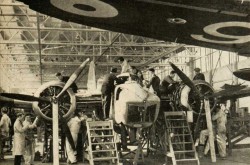

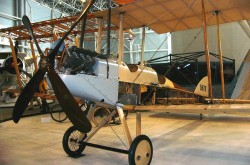
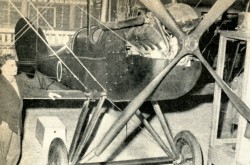

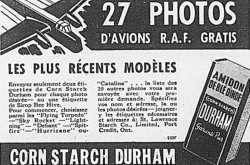

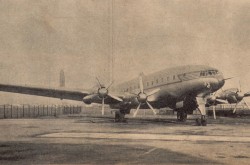

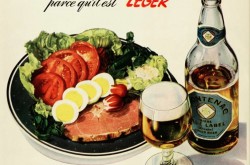
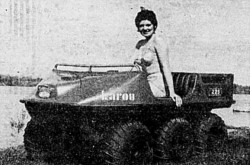
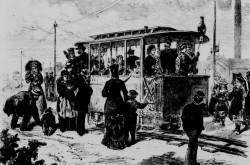
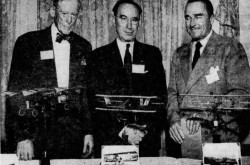

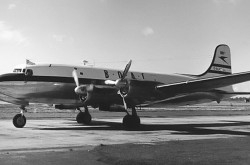
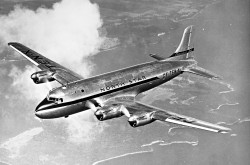
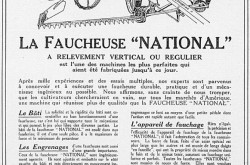
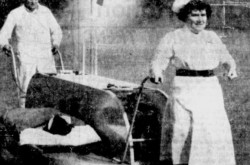
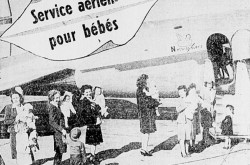
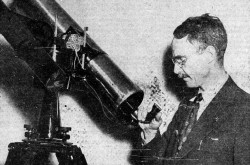
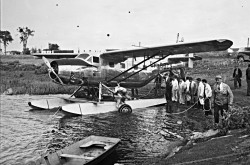
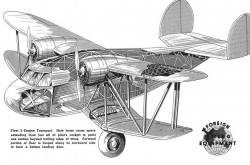
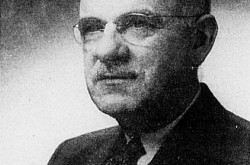
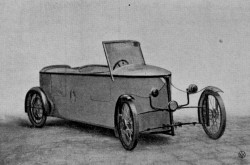
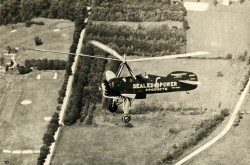
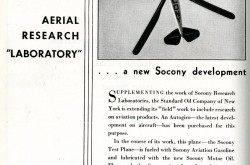
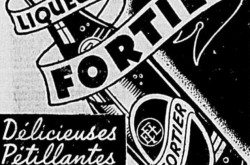
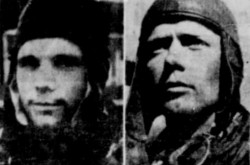

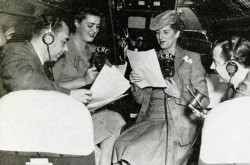
![Peter Müller at the controls [sic] of the Pedroplan, Berlin, Germany, March 1931. Anon., “Cologne contre Marseille – Le mystère du ‘Pédroplan.’ [sic]” Les Ailes, 2 April 1931, 14.](/sites/default/files/styles/thumbnail_7/public/2021-04/Les%20Ailes%202%20avril%201931%20version%20big.jpg?h=eafd0ed4&itok=WnBZ5gMf)
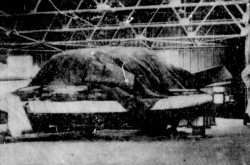
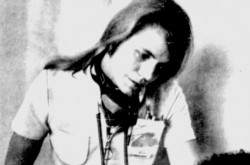
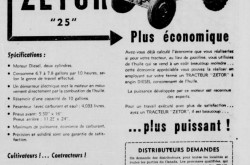
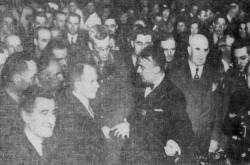
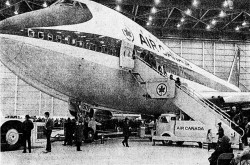
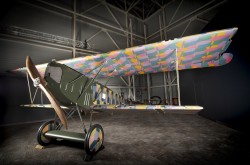
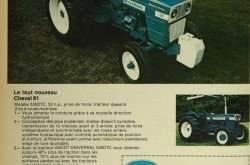
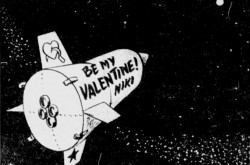
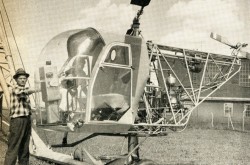

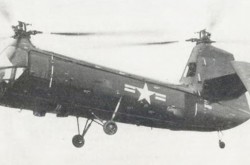
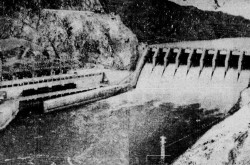
![One of the first de Havilland Canada Chipmunk imported to the United Kingdom. Anon., “De Havilland [Canada] DHC-1 ‘Chipmunk.’” Aviation Magazine, 1 January 1951, cover.](/sites/default/files/styles/thumbnail_7/public/2021-01/Aviation%20magazine%201er%20janvier%201951%20version%202.jpg?h=2f876e0f&itok=DM4JHe5C)
